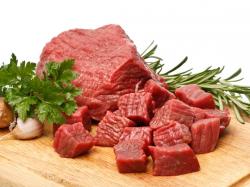Certified Angus Beef: We Can Cook, & We Love Beef
March 12, 2015 | 2 min to read

A decade ago I was in college and heard the same sad story over and over: young people just didn’t know how to cook, and that was sure to spell disaster for beef demand. Industry professionals would tell stories of how their mothers slaved in the kitchen all day, and they verbally mourned the loss of domestic skills as women entered the commercial workforce in large numbers.
Then I’d go home from lecture and my roommates and I would whip up home-cooked meals in our trailerhouse kitchen. I thought we must be anomalies.
Later I realized they were mostly talking about a generation before my time, and recent research suggests I’m not the only “Millennial” who actually enjoys making home-cooked meals.
A study from Oklahoma State University says, “Today, beef consumption is higher among consumers 18 to 34 as compared to those over 35. This group of 80 million consumers born between 1980 and 2000 is most commonly known as the ‘Millennial’ generation.”
(Please excuse me while I do a little happy dance.)
Indeed this group is a “a major target for beef marketing because they consume the most beef both at home and in restaurants of any generation and, given their age, will continue to be a major driver of beef demand for the next several decades.”
Yet, we can’t deny that the world has changed since the Baby Boomer women went to work. There’s been a decline in high-school cooking education, and more after-school activities take families out of the kitchen.
A whole generation has less actual cooking experience, but more exposure to different flavors and methods. The popularity of the “foodie” movement and The Food Network’s growing audience, and an increased interest in nutrition and ingredients in general spells good things for the beef community.
Nearly three-quarters of Americans indicate beef as their number one protein choice, and—even better—they say they’ll pay more for it.
That places more burden on beef to perform.
First, it means we must equip beef consumers with educational resources.
“We can’t assume that folks know how to buy the cut, how to season it, how to prep it and how to know when it’s done or what temperature to cook it at,” says John Lundeen, of the National Cattlemen’s Beef Association, “but the desire for knowledge is there and people want great food. That’s what beef has to deliver on.”
Second, it means we must provide consumers a high-quality product from the very start.
It’s an insurance policy of sorts. The more marbling, the more forgiving a cut of beef is and, regardless of cooking method, the better it will taste.
Yes, we love beef, but we want really good beef. Now it’s up to us, as a beef community, to provide it.
Next time in Black Ink® Steve Suther will look at what makes a herd great. Questions? E-mail mreiman@certifiedangusbeef.com.
Source: Certified Angus Beef LLC
